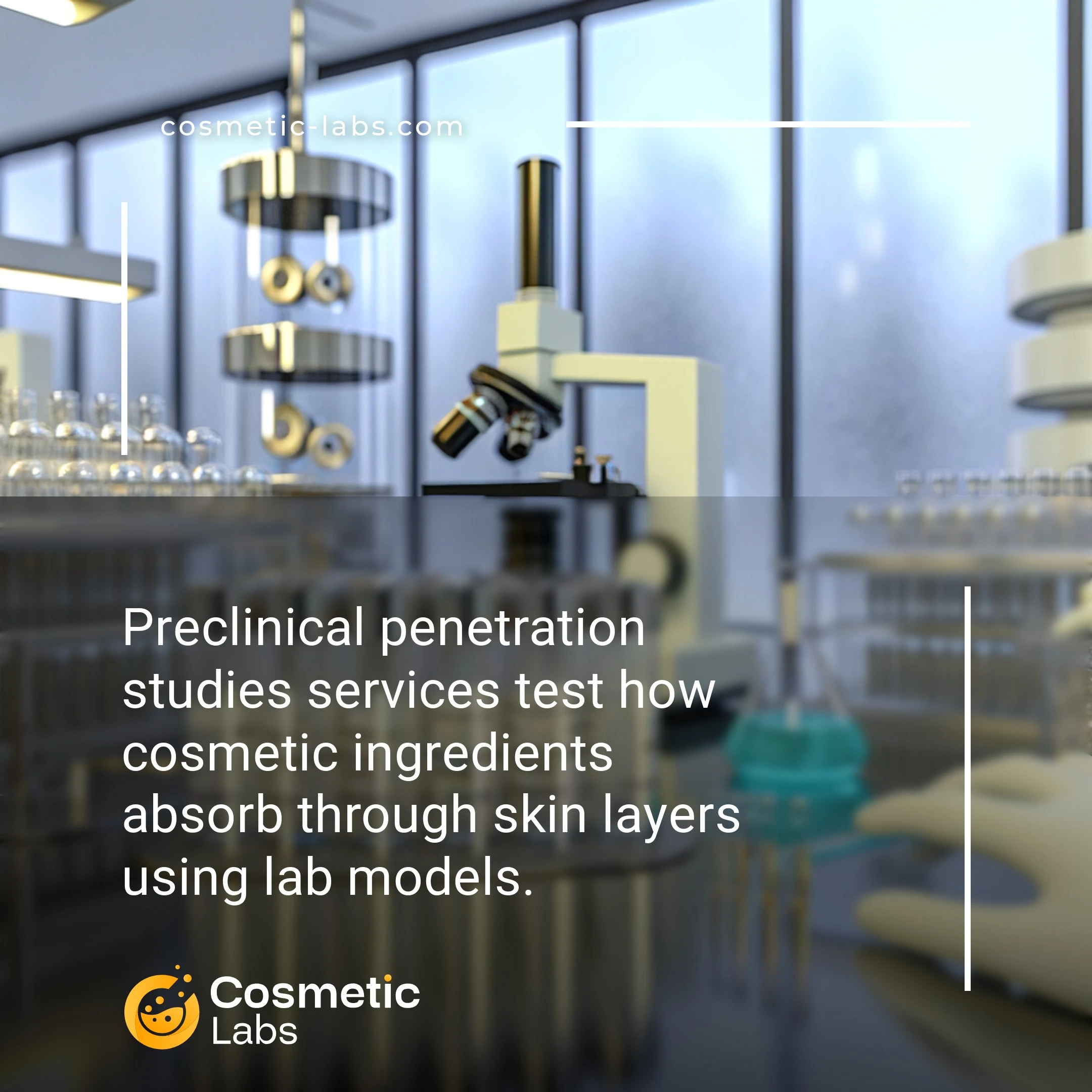Preclinical Penetration Studies Services for Cosmetic Product Development

What is Preclinical penetration studies?
Preclinical penetration studies measure how cosmetic ingredients move through skin layers using Franz diffusion cells and ex-vivo skin models. These tests show exactly where your active ingredients go—whether they stay in the stratum corneum for barrier protection or reach deeper dermal layers for anti-aging effects. Labs typically complete these studies in 7-14 days, giving you data on absorption rates, distribution patterns, and ingredient concentrations at each skin depth.
Why do you need this service?
Brands use penetration testing to optimize active ingredient delivery in serums and anti-aging formulas, determining exact concentrations that reach target skin layers without irritation. Labs apply Franz cell diffusion methods, for example, to measure how vitamin C derivatives or retinol penetrate through skin barriers, providing data that helps formulators adjust particle sizes and carrier systems for maximum efficacy while maintaining safety margins.
Who provides Preclinical penetration studies services?
All cosmetic labs providing Preclinical penetration studies services
There is no company providing these services at the moment.
Preclinical Penetration Studies for Cosmetic Products
Penetration studies reveal how your cosmetic ingredients move through skin layers, helping you optimize formulations before clinical trials. These tests provide data on absorption rates, skin barrier interaction, and ingredient distribution that shape your product’s effectiveness and safety profile.
Types of Penetration Testing Available
Labs on our platform offer several penetration study methods to match your product needs. Franz diffusion cell testing measures how ingredients pass through skin samples over 24-48 hours. Tape stripping analysis shows ingredient concentration at different skin depths.
Advanced options include:
- Confocal microscopy for real-time visualization
- HPLC analysis for precise concentration mapping
- Ex-vivo human skin models for realistic results
- Synthetic membrane studies for initial screening
Key Applications for Product Development
These studies answer critical questions about your formulation. Labs can test whether your active ingredients reach target skin layers at effective concentrations for optimal performance. They can also verify that potentially irritating compounds stay on the surface where intended.
Common applications include testing anti-aging serums for dermal penetration, checking sunscreen films remain on skin surface, and validating delivery systems like liposomes or microspheres. Results guide formulation adjustments and support regulatory submissions across different markets.
Practical Applications of Penetration Testing in Cosmetic Development
Penetration studies directly impact product performance by revealing how active ingredients move through skin layers and reach their target sites.
Active Ingredient Delivery Optimization
Labs use preclinical penetration studies to measure how vitamin C serums, retinol creams, and peptide formulations actually reach dermal layers. Franz diffusion cells track ingredient movement through synthetic membranes or ex-vivo skin samples usually over 24-48 hour periods up to 96 hours.
These tests reveal absorption rates, helping formulators adjust vehicle systems for better delivery. A 2% niacinamide serum might show 15% penetration at 6 hours, while reformulation with penetration enhancers could boost this to 35%.
Safety Profile Development for New Formulations
Penetration data builds safety dossiers by quantifying systemic exposure risks. Labs measure how much preservative, fragrance, or active ingredient crosses the skin barrier using HPLC or mass spectrometry detection.
This data supports regulatory submissions and helps set safe concentration limits. For instance, salicylic acid products require penetration profiles showing less than 10% systemic absorption to meet safety thresholds.
| TEST METHOD | SAMPLE TYPE | TYPICAL TIMELINE | KEY OUTPUT DATA |
|---|---|---|---|
| Franz Cell Diffusion | Synthetic membrane, human/porcine ex vivo skin | 24-48 hours | Flux rate, lag time |
| Ex-vivo Skin Testing | Human/porcine skin | 6-72 hours | Depth profile, total absorption |
| Tape Stripping | In-vivo volunteers, ex vivo skin | 2-8 hours | Stratum corneum concentration |
Ready to validate your formula’s penetration profile? Connect with specialized testing labs on our platform to access the right methodology for your product development needs.
